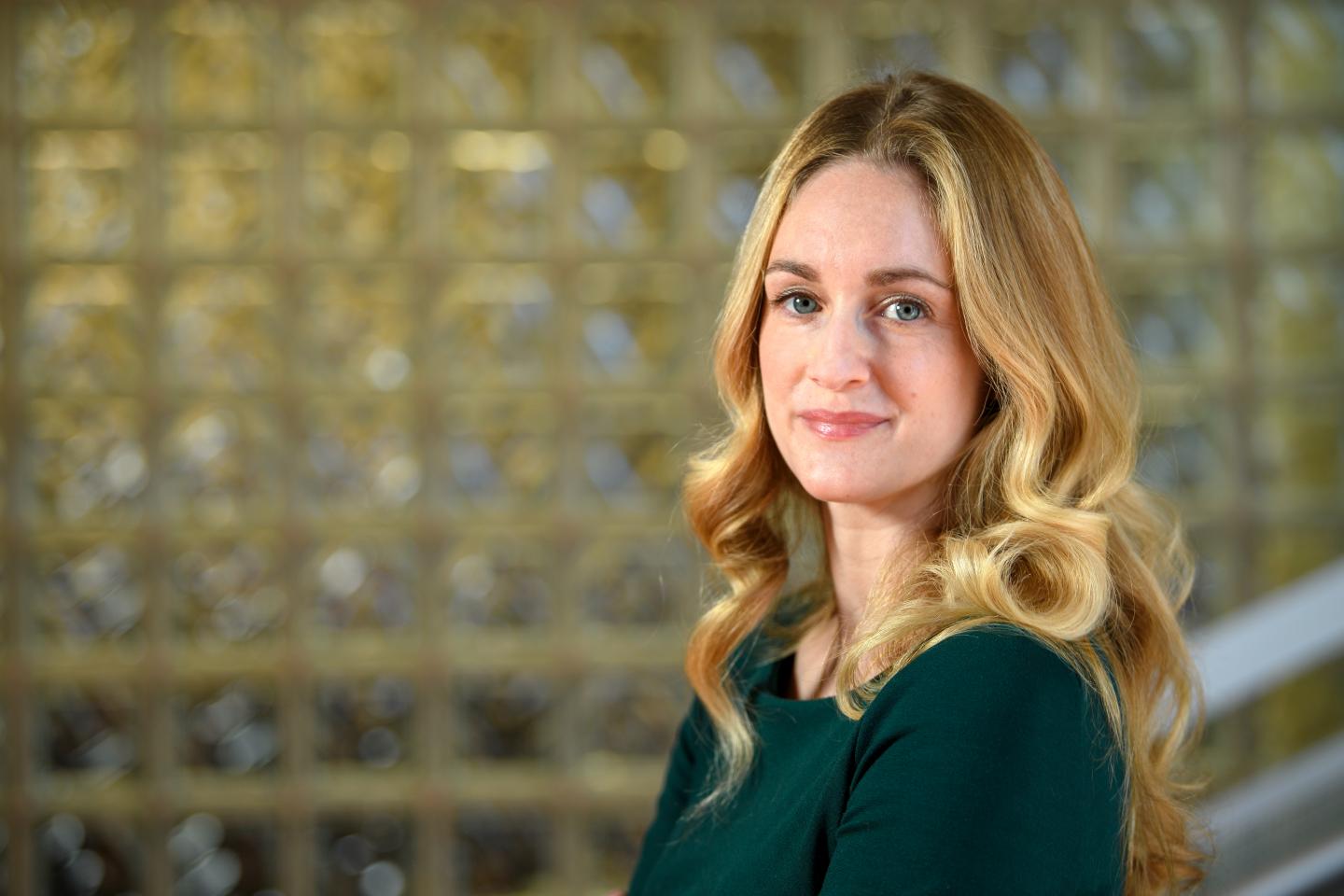‘Highly attractive women can be perceived as dangerous’

Credit: Washington State University
PULLMAN, Wash. – A Washington State University researcher says attractive businesswomen are considered less trustworthy, less truthful and more worthy of being fired than less attractive women. This “femme fatale effect,” as she and a University of Colorado colleague call it, goes beyond a commonly accepted explanation that attractive women simply aren’t seen as fitting in traditionally masculine roles. Rather, the effect taps into more primal feelings of sexual insecurity, jealousy and fear among both men and women.
“Highly attractive women can be perceived as dangerous and that matters when we are assessing things like how much we trust them and whether we believe that what they are saying is truthful,” said Leah Sheppard, an assistant professor of management in the WSU Carson College of Business and lead author of a paper in the journal Sex Roles.
The myth of the femme fatale has been around since ancient Greece, when Homer’s Odysseus was seduced by the goddess Circe and kept from his wife and home for a year. The ensuing list of man-eaters, vamps and dark-hearted sirens is long, from the smoldering Carmen of George Bizet’s opera to the lethal leading ladies of film noir.
Despite decades of feminism and a growing awareness of gender stereotypes, the effect persists.
In fact, said Sheppard, “there’s two dueling stereotypes here. You have the ‘what is beautiful is good’ stereotype, meaning that in general attractive people should fare better across their lifespan. We can say that that’s generally true.
“It becomes more nuanced when we look at gender,” she added. “For women there are certain contexts in which they don’t seem to benefit from their beauty.”
Sheppard and Stefanie Johnson, an associate professor at the University of Colorado Boulder’s Leeds School of Business, conducted six separate tests to reach their conclusion. They used images drawn from a Google images search for a “professional woman” and had participants in Amazon’s Mechanical Turk, an online crowdsourcing platform, rate their attractiveness.
The first four studies asked participants to rate the truthfulness of women and men announcing layoffs in fictional news accounts. Regardless of their title or industry–executive or the traditionally feminine public relations professional, the masculine culture of tech firm or more feminine hospital–the attractive women were consistently considered less truthful than the non-attractive women. Because the results were independent of the women’s role or industry, the “best fit” argument failed.
In the fifth study, the researchers used what’s called a prime, a suggestion that puts participants into an emotional state that can color their perspective. They asked participants to think and write about a time when they felt secure in a relationship and certain that their romantic partner “was faithful and committed to them alone.” This was called the “sexual security” prime. A second “general security” prime had them think and write about a time when they felt very good about themselves.
Those primed to feel sexually secure ended up thinking attractive women were as truthful as less attractive women.
The final study asked if participants thought the woman should be fired, and primed some participants to feel sexually secure, but others to feel sexually insecure. As with the fifth study, the sexually secure participants found both attractive and less attractive women were equally truthful. Participants primed to feel sexually insecure viewed the attractive women as less truthful, and therefore more deserving of termination.
Sheppard sees both evolutionary and social factors at work in the results.
Evolutionarily, women have used their attractiveness to get mates. They see more attractive women as competition and threats to steal their partner. Men, for their part, have been drawn to attractive women but worry that their attractiveness might make them unfaithful. Before the recent advent of the paternity test, they risked raising children that were not their own.
Socially, attractive women can use their looks to get advantages in the workplace, whether they deserve it or not. Both men and other women can find this unfair, said Sheppard, if not deceitful.
Sheppard said the femme fatale effect might be blunted if people were more conscious of the stereotypes they use, but people are often unwilling to acknowledge that they use stereotypes to begin with.
Unfairly or not, she said, much of the burden of addressing the problem falls on attractive women themselves, who she said can attempt to be more transparent.
“They’re going to be challenged in terms of building trust,” she said. “That’s not to say that they can’t do it. It’s just that trust is probably going to form a bit more slowly.”
###
Media Contact
Leah Sheppard
[email protected]
Related Journal Article
http://dx.




